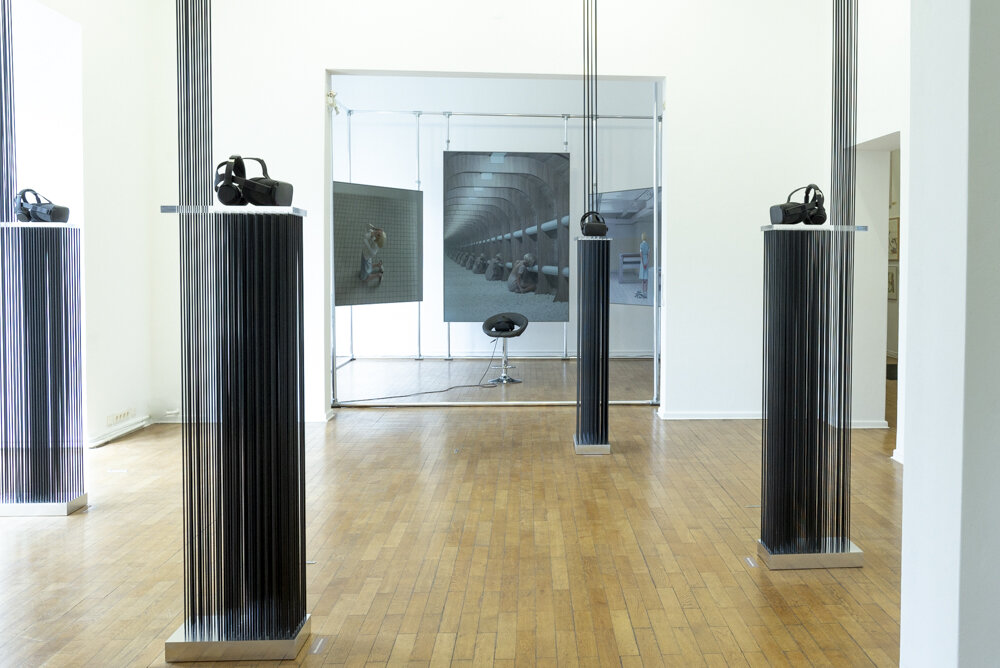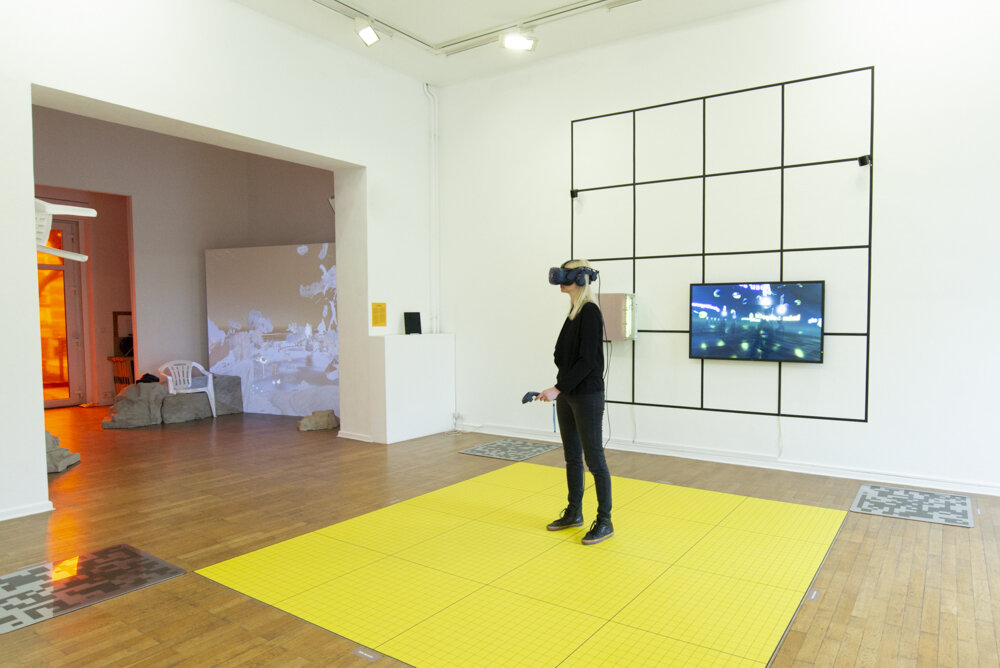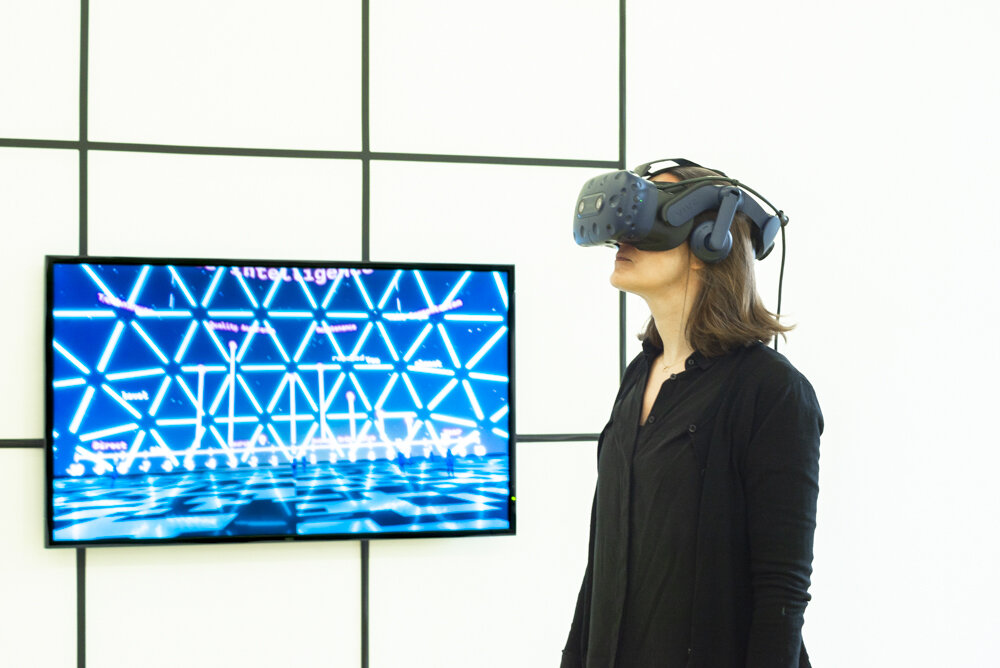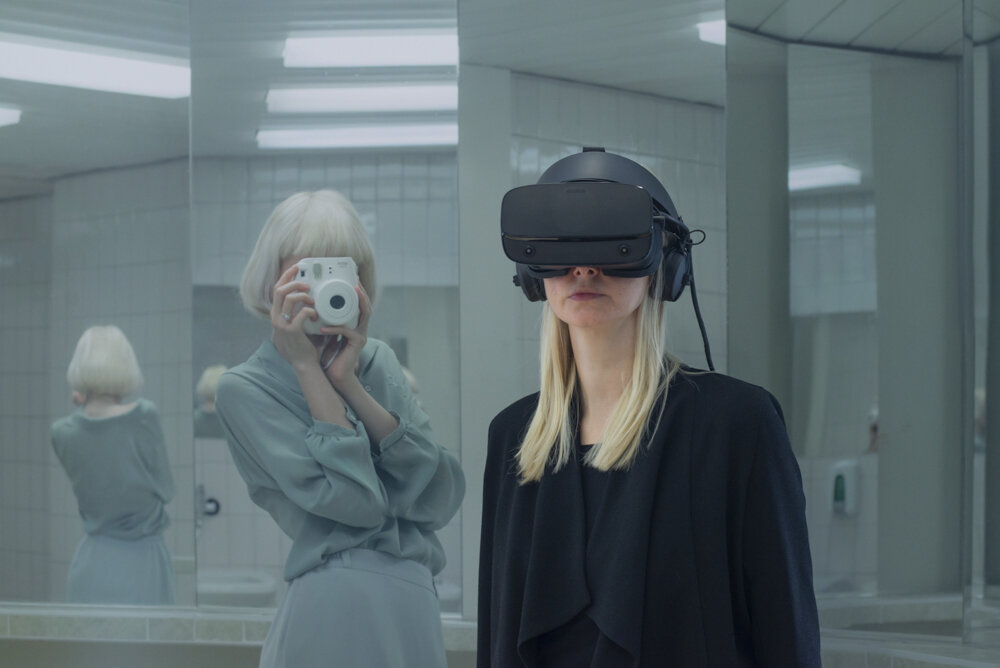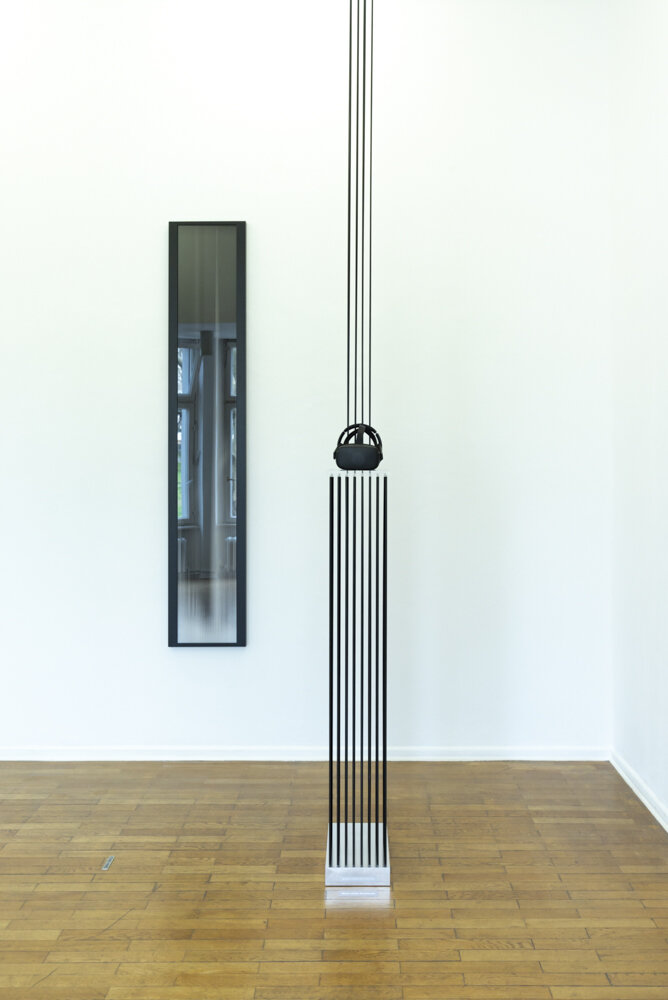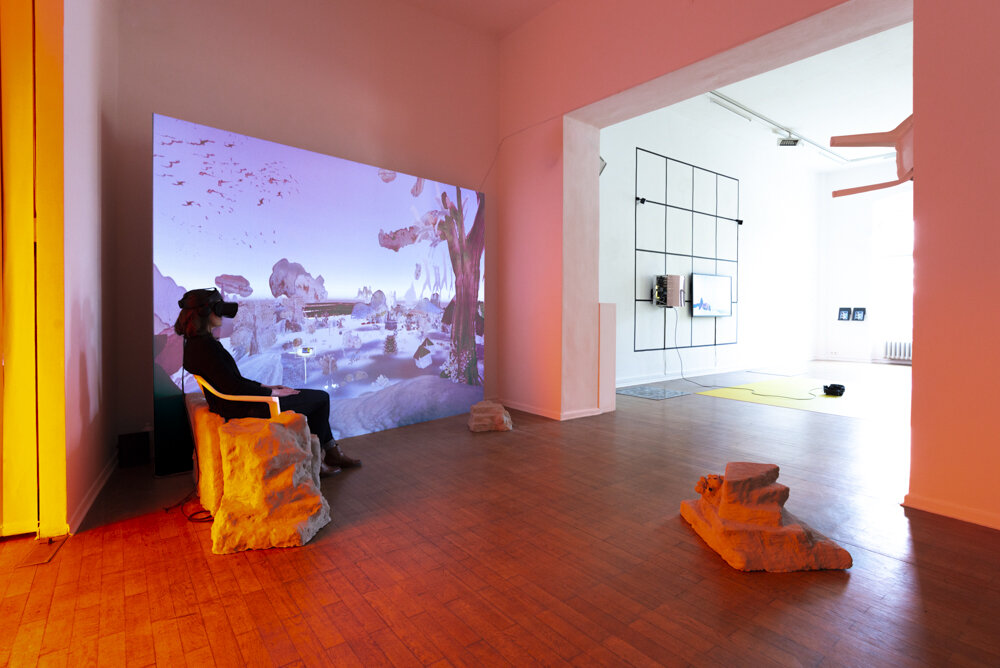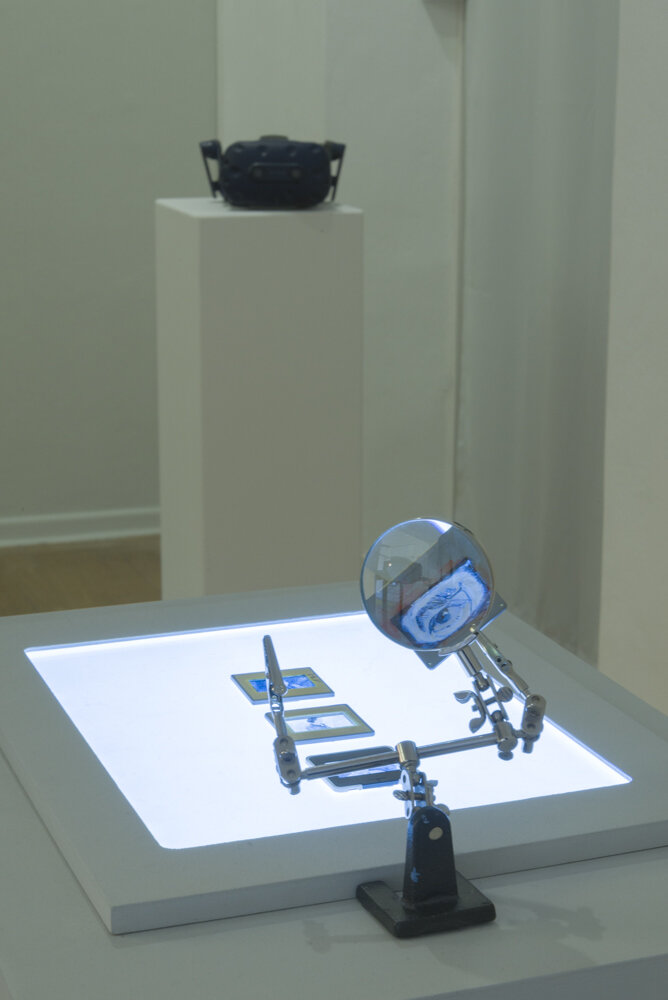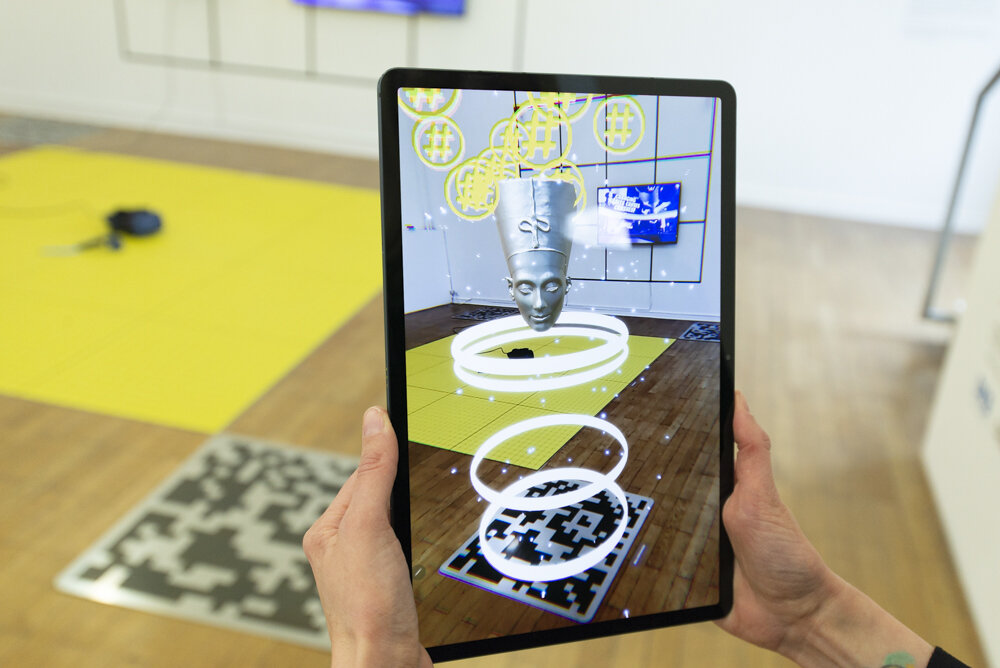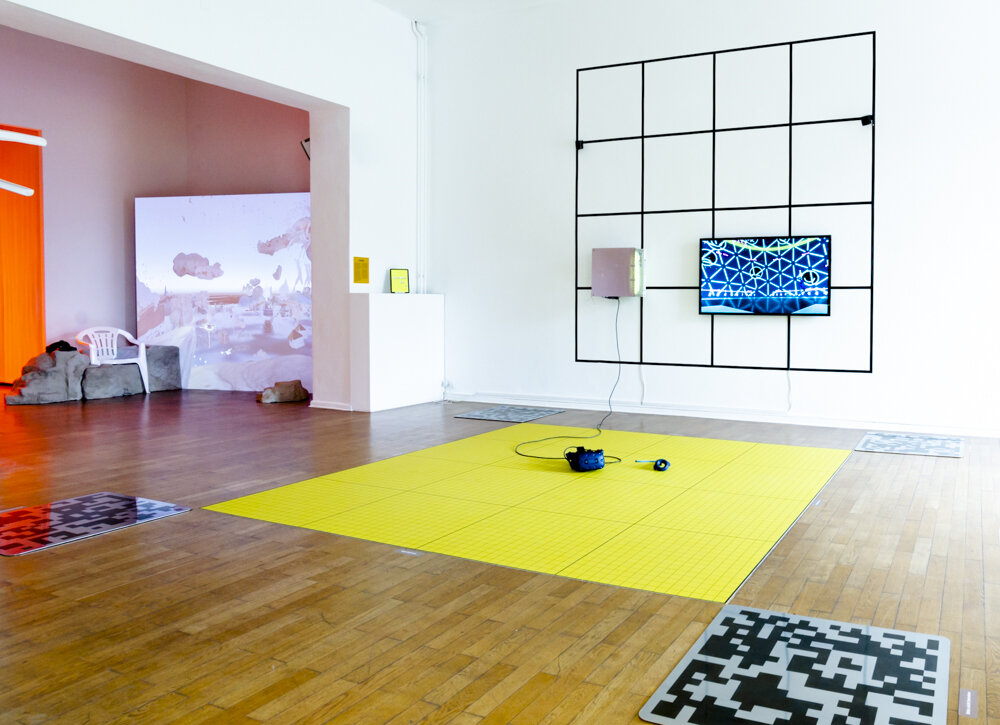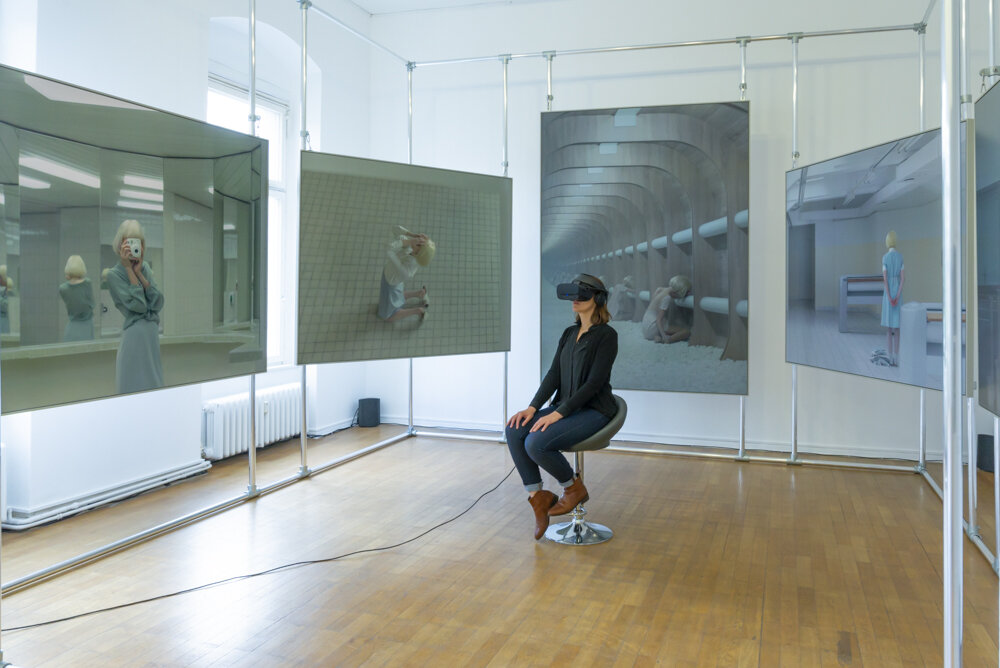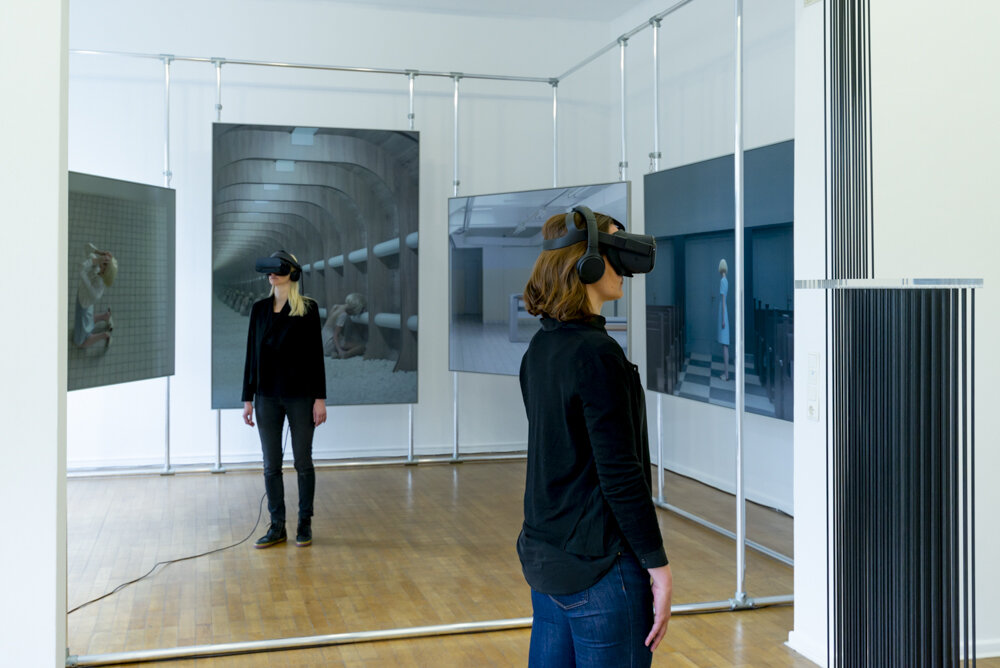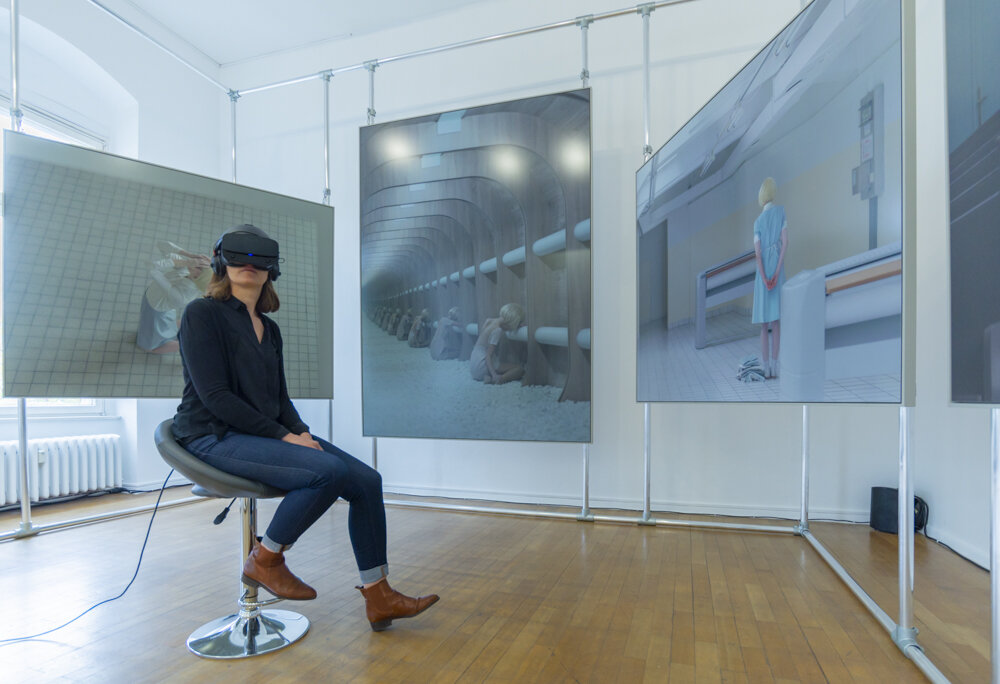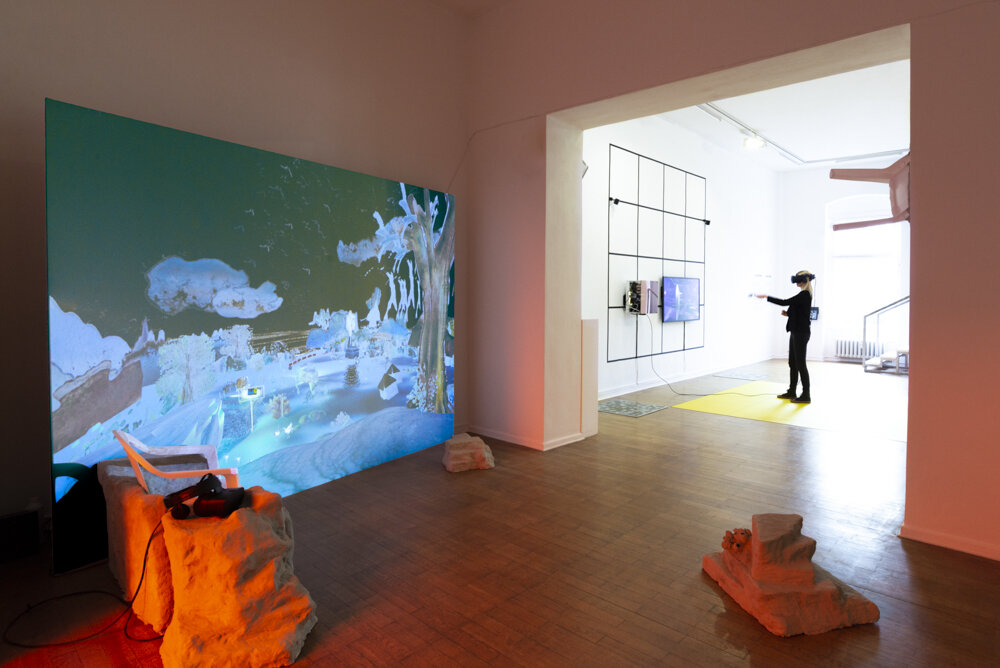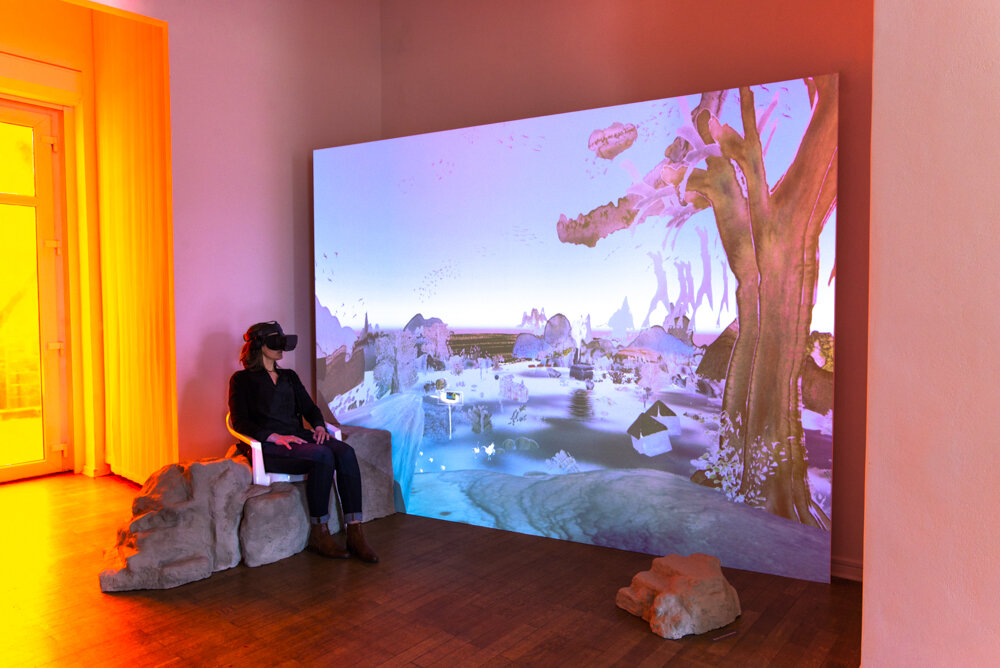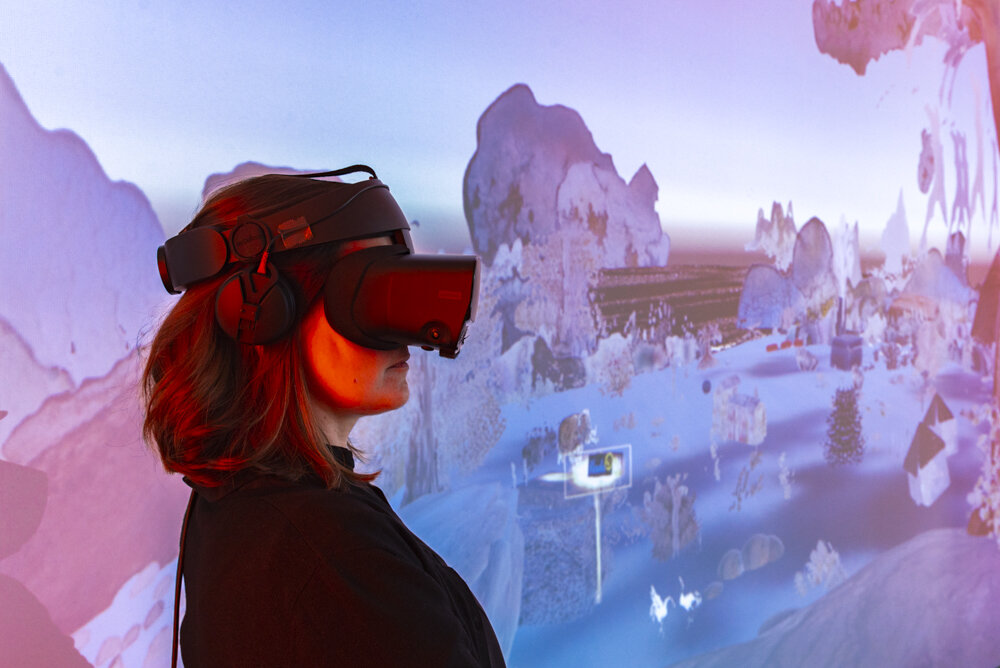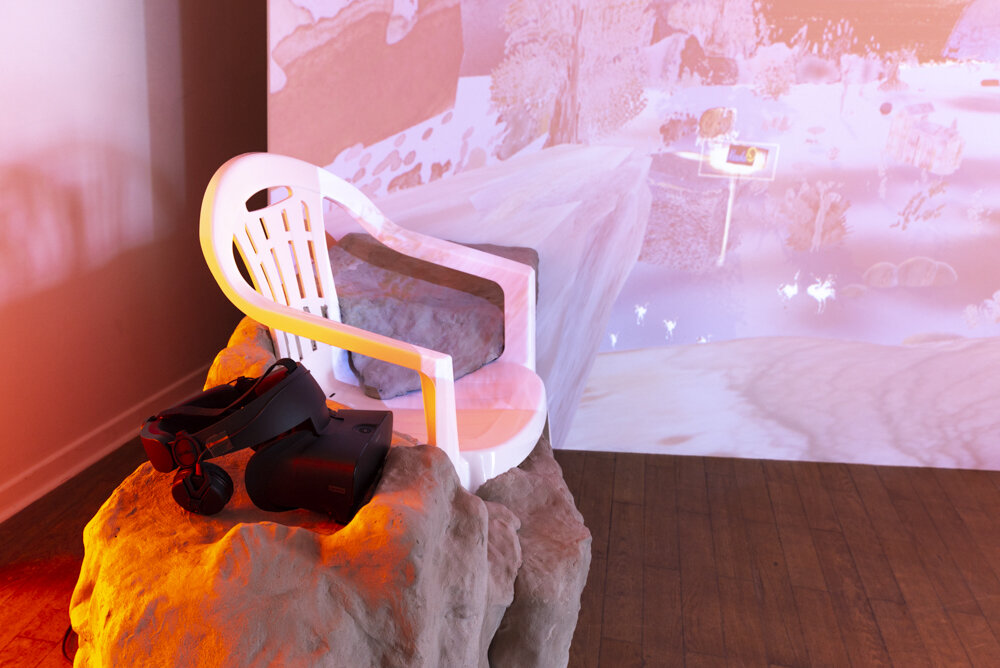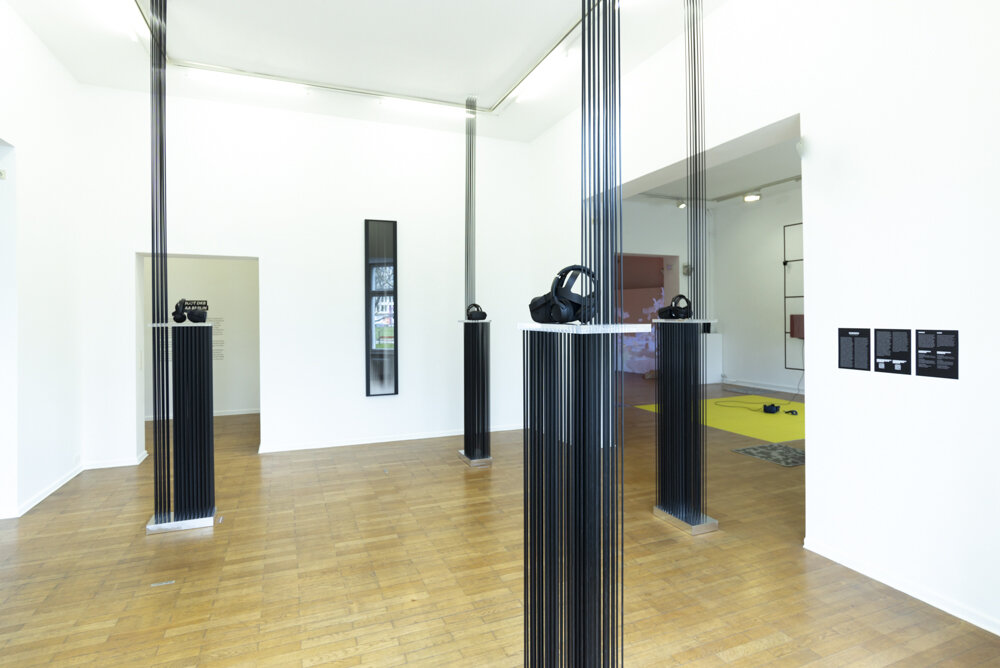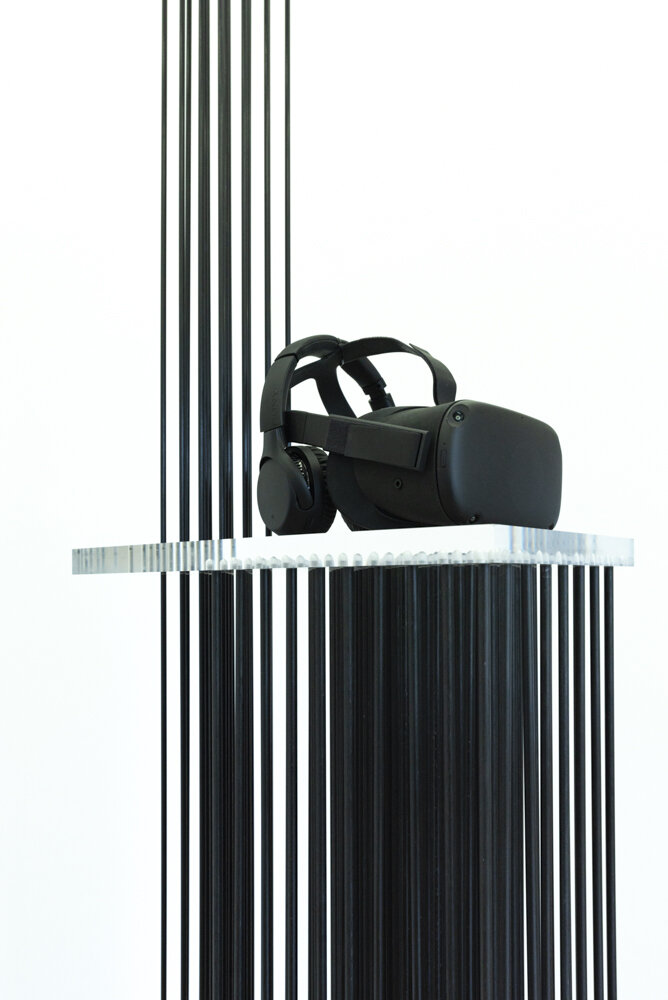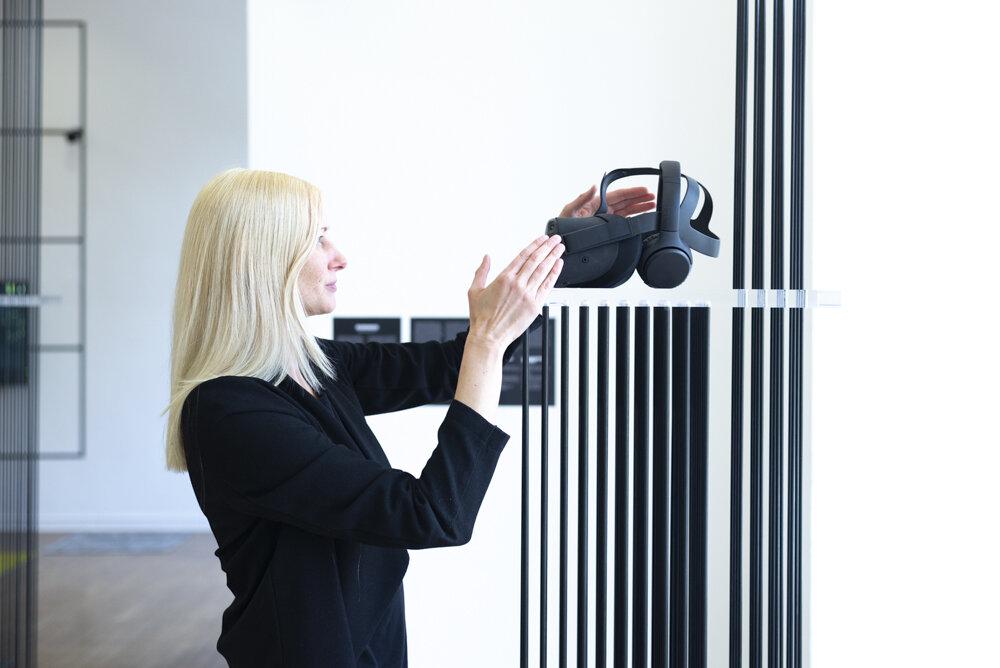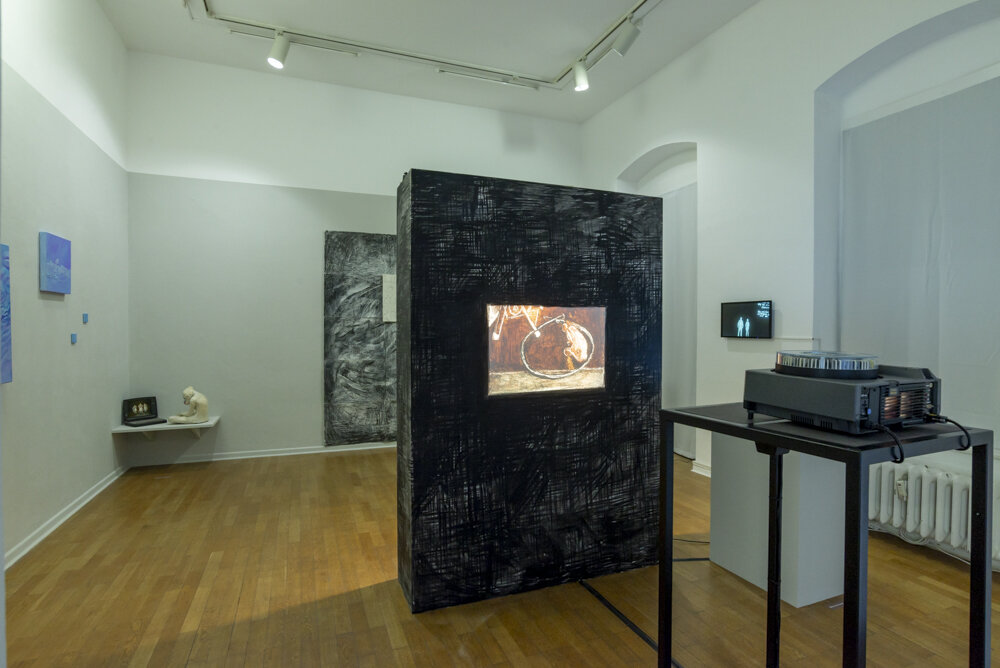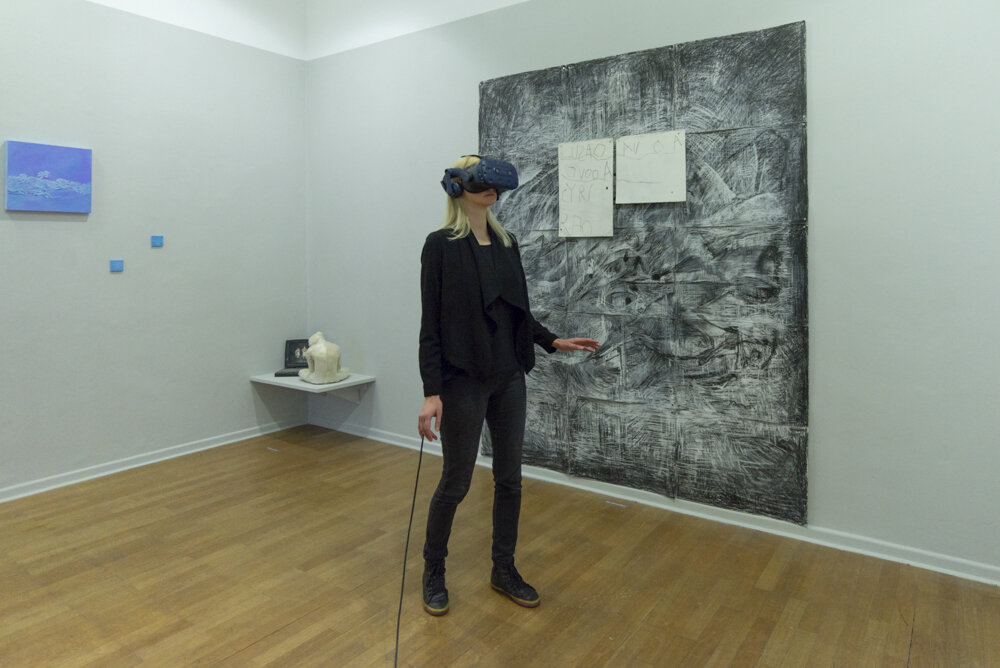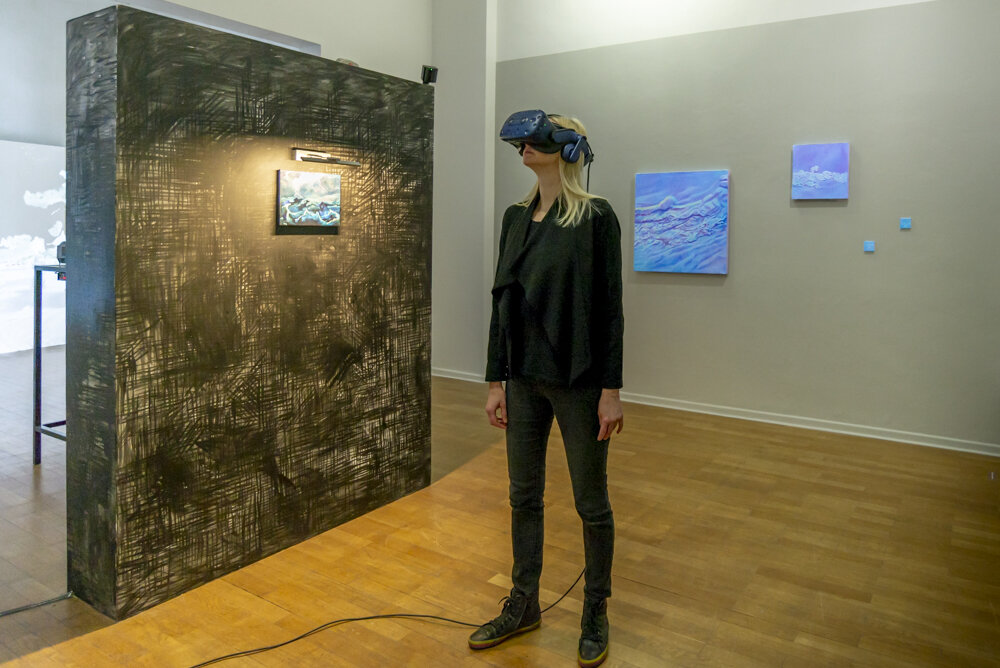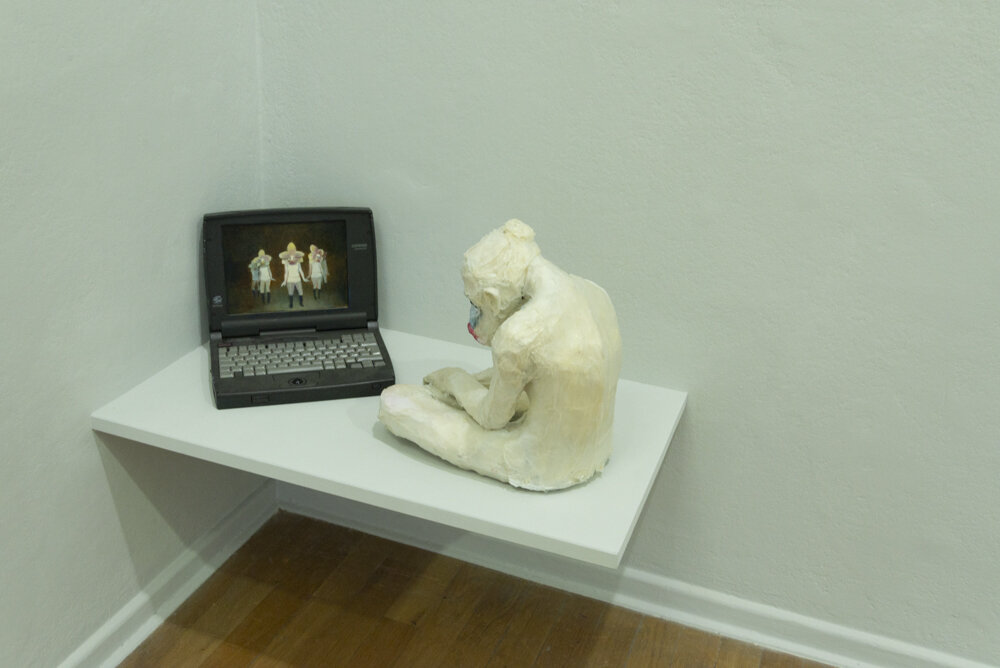RESONANT REALITIES
Exhibition of the VR ART PRIZE by DKB in Cooperation with CAA Berlin
Works of the grant recipients: Banz & Bowinkel, Evelyn Bencicova, Patricia Detmering, Armin Keplinger and Lauren Moffatt
Curated by: Tina Sauerlaender (Artistic Director)
April 16 – July 4, 2021
Haus am Lützowplatz, Berlin
Documentation film, 2021 (c) J. Pegman
Each individual perceives the world through different lenses. Our personal views determine our impressions of our surroundings. Communication and exchange enable the possibility of encountering and understanding other outlooks. This act can be understood as a resonance of various realities. By putting one's own perspective in relation to another’s, it is possible to expand our own. In the best case, this process may create an open and empathetic coexistence within our society.
In the exhibition space, we interact with virtual reality artworks that here form a digital resonance of the physical world. We encounter virtual beings, observe interpersonal exchanges, and witness arrangements among artificial intelligence. The digital works resonate in the exhibition space in corresponding site-specific installations. The contrast between the physical and computer-generated worlds reveals the divergent parameters that apply to each location. Depending on the environment and one’s own viewpoint, the objects appear in variants and communication follows a different set of rules.
The artistic works reveal a deeper understanding of the digital realm and present technology as a human product which is inextricably linked to our values and norms. Our engagement with these works unlocks the possibility of questioning our relationship to culture, to our fellow human beings, and to the machines and technologies that surround us. This process consequently prompts a reexamination of our thoughts and actions.
Selected Press reviews: Tagesspiegel, Weltkunst, FORBES, Berlin Art Link, GalleryTalk, RadioEins (rbb)
Video documentation of the opening (in German)
Artist Talk with Banz & Bowinkel
Artist Talk with Evelyn Bencicova
Artist Talk with Lauren Moffatt
Artist Talk with Patricia Detmering and Armin Keplinger
Banz & Bowinkel, Poly Mesh, 2020 / 2021
Artist Talk with Banz & Bowinkel (in German)
In surreal and abstract landscapes, users encounter artificial intelligence represented by masked avatars that have assumed female forms. The intrusion of the human users disturbs the system forcing it to make new calculations. The avatars begin to communicate with each other and start to engage in conversation with the intruder, i.e. the user. Human and machine venture into unknown territory. As they approach each other, they try to communicate. The site-specific installation transports the experimental idea to a black-and-yellow crash test scene, where vehicles normally collide with passengers in the form of life-size mannequins. Just as the crash tests illustrate the consequences of the collision between humans and machines, Poly Mesh visualizes hidden processes in the digital space. The avatars symbolize algorithms on the Internet or on social media that influence our behavior, all while they run invisibly in the background. Here they assume their shape and we are able to observe their behavior. The exterior of the avatars is based on the default female body shape common in 3D programs. The artist duo plays with the fact that we often reproduce stereotypes in the digital environment without reflecting on them, even though we theoretically have infinite design options at our disposal. The female machine is yet another cliché that we encounter in everyday life in the form of Siri and Alexa. The stereotype of the subservient, friendly woman is reflected in machines that are designed to fulfill all of our requests. With Poly Mesh, Banz & Bowinkel encourage us to think about the hidden processes in digital space and to critically reflect on socially normalized ideas. The site-specific installation by the artist duo Banz & Bowinkel is imbued with a virtual grid reminiscent of a crash test setup. At the grid’s nodes are panels that can be activated using the iPad. From here we can hear the testimonials of the avatars, which have been reported after the humans have penetrated their system (see related VR work Poly Mesh). In contrast to the avatars' communication formulated by Banz & Bowinkel in the VR work, artificial intelligence has generated the sentences here. Their word strings seem philosophical, dadaistic and poetic at the same time. Complementing the VR piece, this work shows a different perspective on the same subject matter. The AR work reveals that we ourselves live in multiple parallel worlds, each creating distinct conditions for communication. We behave differently on apps like Instagram or Clubhouse, just like we communicate in particular ways in our private living rooms or in professional meetings.
Evelyn Bencicova, Arielle Esther und Joris Demnard (Ikonospace), Artificial Tears, 2019/2021
Artist Talk with Evelyn Bencicova (in English)
In Artificial Tears, viewers are introduced to a feminine figure in several successive scenes. She symbolizes women in various social roles. The voice of artist Evelyn Bencicova guides us through the work and speaks about the history of female subjugation and obedience, as well as the culturally inherited notions of the male creator and the female machine. The work alludes to the fact that machines, robots, or artificial intelligence, like Siri and Alexa for example, are imbued with the stereotype that women are meant to be helpers. "They respond to insults with politeness and avoid any verbal conflict, always at their own expense,” says the artist on the role of these machines. They also mirror the role of women in patriarchal systems. In the final sequences, the woman frees herself from social bondage and finds her way to autonomy. The outward appearance of the female characters borrows from the internet myth of "Tara the Android''. Tara is a female mannequin who is staged in various roles by her male creator. This allusion to the ancient Pygmalion legend, in which an artist carves his perfect woman in stone, establishes a link between the long tradition of these gender roles and today's Internet culture. Artificial Tears features photographs by Evelyn Bencicova embedded in new spatial structures in a virtual environment created by Joris Demnard (Ikonospace). Consequently, the images no longer appear as mere images, but as part of a new narrative, a new reality. In the exhibition space, the photographs form an immersive spatiality through their installation on a scaffolding and the sound installation by Arielle Esther. The fragile interaction between flat and spatial elements symbolizes the fragility of simulated and physical reality, as well as of social norms and one's notions of their own personal existence. The contrasting worlds don't quite manage to fit together, and in the end the very choice of the female protagonist opens up new perspectives.
Patricia Detmering, Aporia, 2020/2021
Artist Talk with Patricia Detmering and Armin Keplinger (in German)
In her work Aporia, Patricia Detmering investigates the development of group dynamics. The virtual world she has created depicts the interplay of individual actions within the framework of collective processes. Visitors take a seat on a large stone in the exhibition space, which extends into the virtual environment. This space consists entirely of watercolors by the artist, which she has transferred and animated in the virtual realm. The viewers observe how the characters, controlled by algorithms, react to the intrusion of other avatars and virtual reality users. The artist has provided the individual characters with their own behavioral patterns, based on insights from the work "Mass and Power" (1960) by the writer Elias Canetti. Some avatars behave more according to a principle of order, while others act in a more open manner. The inhabitants of the virtual world begin to react differently towards the intruders. They may form groups, appoint leaders, or build walls. Since the work is generative, it randomly rebuilds itself after each visitor. There are many possible sequences, determined by the behavior of each avatar. In the physical exhibition space, visitors encounter stone-like artifacts with pieces of plastic chairs jutting out of them. They are reminiscent of the rocks found in the virtual world and at the same time symbolize the bedrocks of our future, which will be made up of the materials we use today. The artist suggests that the occurrences that take place in Aporia are just as present in the physical-real environment. She points out the fact that the collective processes, sparked by individual behavior, are continually repeated all the time. There are no solutions, only possibilities.
Armin Keplinger, THE ND-Serial, 2020/2021
Artist Talk with Patricia Detmering and Armin Keplinger (in German)
In virtual environments, viewers explore four digital sculptures using VR headsets. The sculptures are all based on the same basic form, a tube that resembles a hollow, needle-like shape. Through repetition as well as changes in size and proportions, the artist Armin Keplinger molds the initial form into enormous vibrating blocks set in desert landscapes or into sacred-looking figures with human proportions placed in minimalistic interiors. There are four sculptures in the exhibition space, which transfer the initial design principle into the physical space through the use of carbon rods. In contrast to the virtual world, physical laws such as gravity or the dimensions of the exhibition space impose limitations on the sculptures. By contrast, the digital world provides almost infinite design possibilities and creates new perspectives for the viewer that would not be possible in the physical world. In THE ND-Serial, not only do the sculptures undergo an augmentation, but the viewers also become acquainted with new ways of viewing in digital space. The constant changes of perspective, the different proportions, and the interplay of proximity and distance offer new ways of perceiving the work. Armin Keplinger uses the basic needle-like form as a means of measuring reality. Where does space begin? Where does it end? How do objects appear in it? In this context, the area surrounding the sculptures - particularly the empty spaces and the negative spaces between them - have an important significance. Only together can they portray a comprehensible reality. The visuals resonate with expressive sound, which emphasizes the emptiness of the virtual spaces and the dynamics of the sculptures with continuous, monotonous sound sequences. The interaction of the different layers enables us to locate ourselves and the sculptures in the digital space and to open up the dimensions of the environment.
Lauren Moffatt, Image Technology Echoes, 2020/2021
Curator’s tour and artist talk with Lauren Moffatt (in English)
In a virtual museum room, the users of the VR artwork encounter an older man and a younger woman standing in front of a painting. Their physical appearances are distorted because they have been transferred into the digital space by means of a 3D scanning process. They are looking at a seascape: a large expressionist canvas with a stormy ocean motif. They chat about the painting, but what they say is difficult to understand. We delve into their minds and witness their personal perspectives on what they see, but their words are not of human origin. They are created by artificial intelligence. Inside their heads are other objects that represent the characters and that we find again in the exhibition space. The seascape does not appear monumental here, but rather in a small format. The images painted by the artist on slides appear either as a large projection or as a small original piece on the light table depending on the perspective and technology. The works with the blueish shimmering surfaces reveal another visual layer of virtual reality that would otherwise remain concealed. They show the brushstrokes of the seascape magnified in great detail, seen from the computer's perspective. The surface of the images appears three-dimensional, even though it is completely flat. This optical illusion is often used with digital objects and textures to make them appear more realistic. With Image Technology Echoes, Lauren Moffatt demonstrates that objects and people appear differently in a range of physical or virtual environments, which means that we perceive, classify, and understand them differently in each case. How we communicate with other beings depends on this, as the dialogues and monologues of the protagonists in virtual reality show so vividly.
All images 2021 (c) J. Pegman

